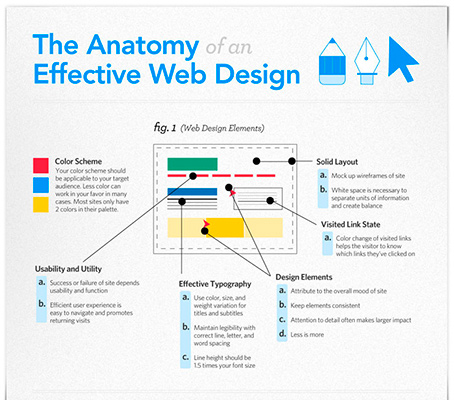Key Elements Of Web Site Style: Methods For Developing An Accessible Customer Experience
Key Elements Of Web Site Style: Methods For Developing An Accessible Customer Experience
Blog Article
you can look here -Hall Neville
When it concerns website style, ensuring user-friendliness is vital. From responsive layout to streamlined navigation, every component plays a crucial function in developing a site that satisfies your audience's demands. Yet what about the finer details that can make or damage a customer's browsing experience? Keep tuned as we uncover some often-overlooked tips that can raise your web site's functionality to the next degree, making it truly stand apart in the digital landscape.
Relevance of Responsive Style
Receptive layout is an important aspect of modern internet site development. Ensuring see page is responsive methods that it can adapt to various display dimensions and tools, supplying a seamless experience for users.
With the increasing use smart devices and tablet computers to access the internet, having a receptive style is important for reaching a wider target market. It helps in enhancing individual experience by making your site simple to navigate and continue reading any type of device.
Additionally, receptive layout can positively affect your internet search engine rankings, as online search engine like Google prioritize mobile-friendly internet sites. By having a responsive layout, you're additionally future-proofing your web site, as new tools with differing screen sizes remain to arise.
Simplify Navigating Framework
To improve customer experience and promote easy access to info on your web site, streamlining the navigating framework is extremely important. When developing your website, concentrate on creating a clear and user-friendly navigating food selection that assists site visitors locate what they're looking for quickly.
Restriction the number of food selection products to the essentials, grouping related web pages with each other to avoid frustrating users. Use detailed tags that plainly suggest the content of each page, making it easier for customers to understand where each web link will take them.
Consider carrying out dropdown menus for subcategories to stop cluttering the major navigation bar. In addition, consist of a search bar plainly on the web page for individuals that like searching for certain details.
Focus on mobile responsiveness in your navigating design to ensure simple accessibility on all tools.
Maximize Web Page Load Speed
Improving page load rate is vital for preserving visitors on your web site. Slow-loading pages discourage individuals and can cause high bounce prices. To enhance page lots rate, start by maximizing pictures. Compress images without jeopardizing high quality to lower their data dimensions.
Furthermore, allow internet browser caching to save often accessed sources locally, quickening lots times for returning site visitors. Minify CSS, JavaScript, and HTML data by removing unneeded characters, remarks, and formatting, enhancing load speed.
Consider using a web content shipment network (CDN) to disperse your internet site's content throughout multiple web servers worldwide, lowering latency for individuals accessing your website from different locations. Lastly, limit making use of third-party manuscripts and plugins, as they can significantly impact lots times.
Verdict
Finally, by integrating receptive layout, simplifying navigating, and maximizing web page load rate, you can produce a straightforward internet site that appeals to a larger audience and boosts individual experience. These essential elements make certain that site visitors can easily access and browse your site across various devices, leading to raised engagement and complete satisfaction. By concentrating on these crucial aspects, you can develop a successful site that keeps users coming back for even more.
